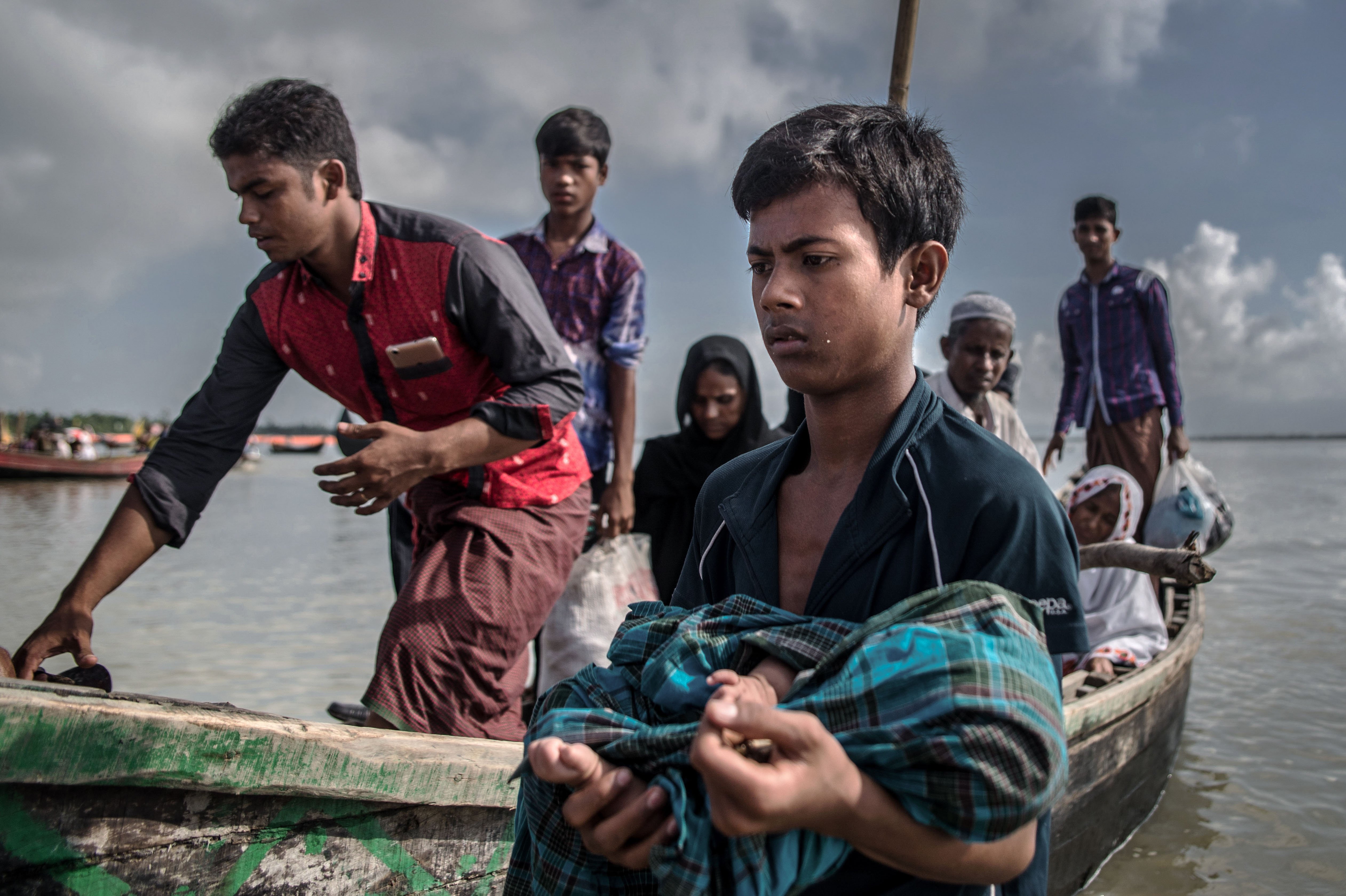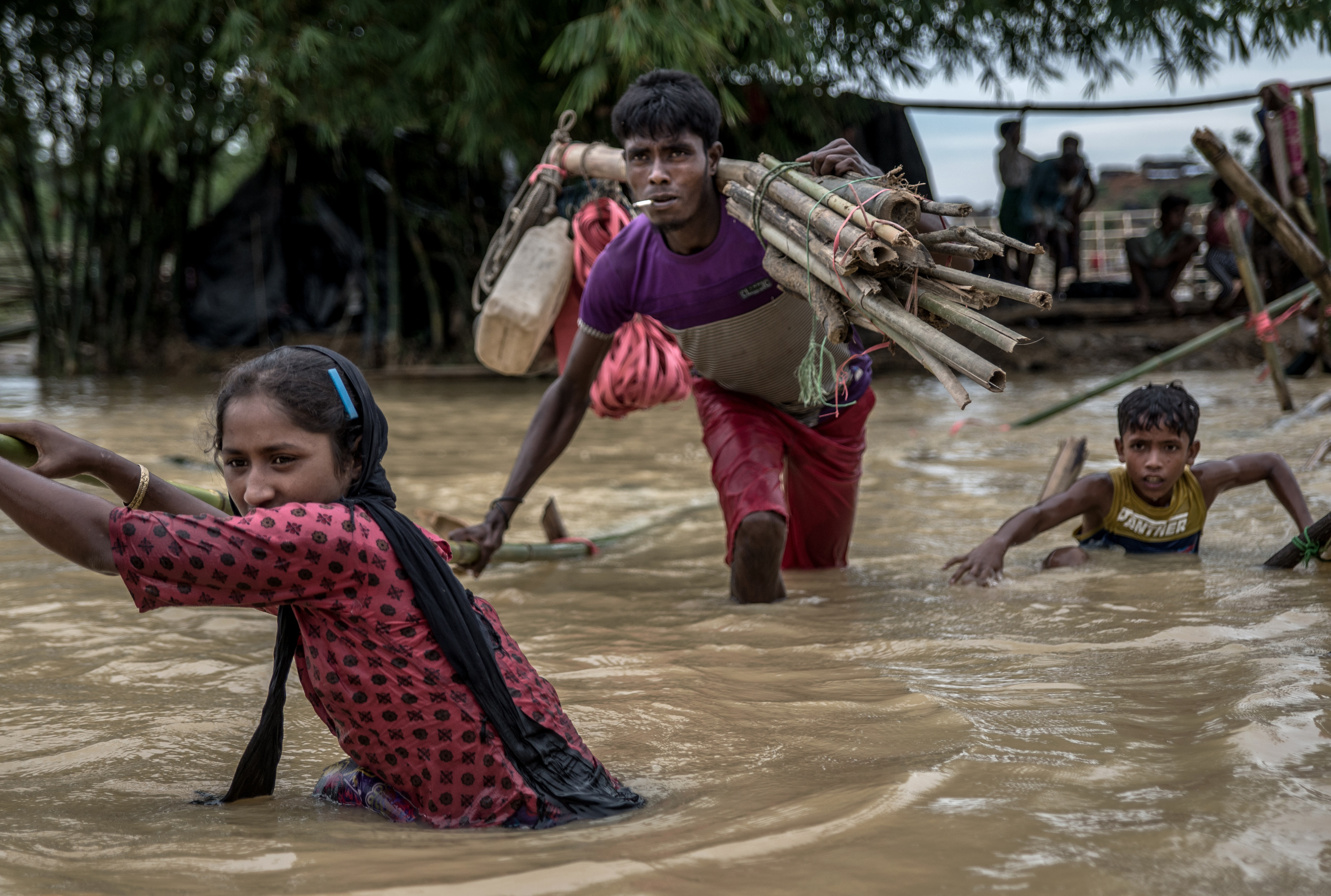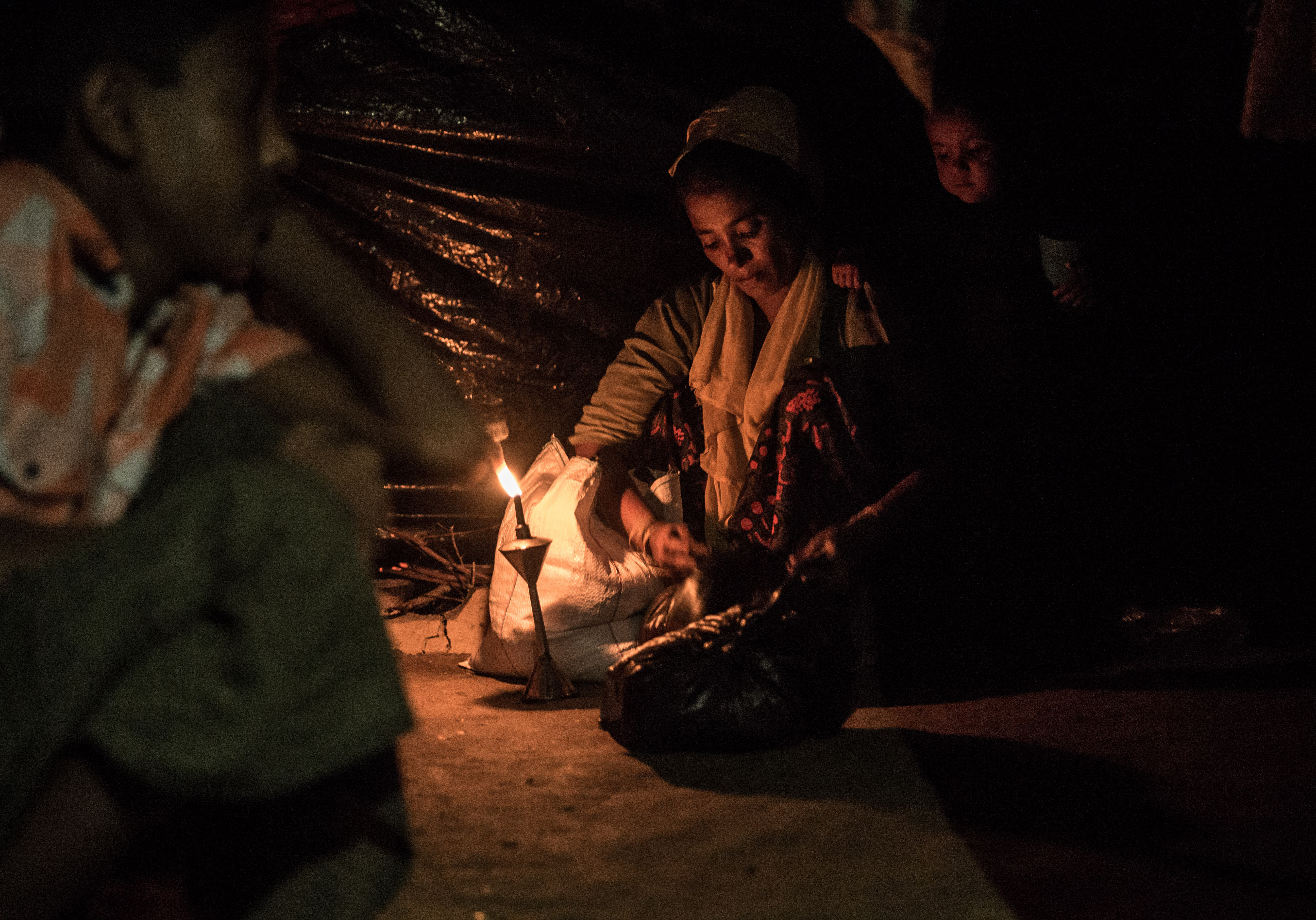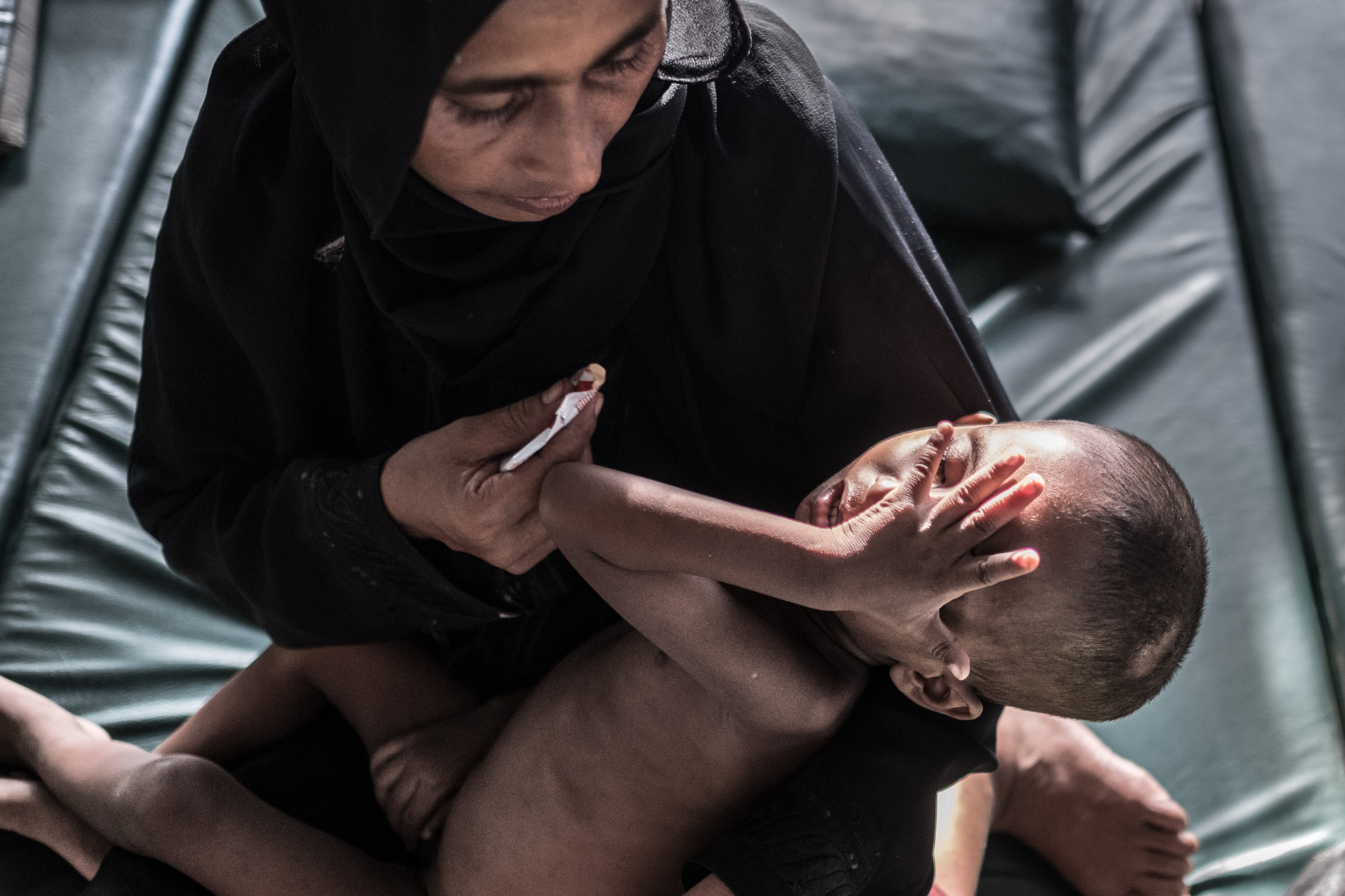Four-year-old Huzaifa stood nervously against a wall as a nurse recorded her measurements. Her stick-like arms hung limp by her sides and her ribcage protruded against the skin of her chest.
She is one of more than a half-million people who, since 25 August, have fled ethnic violence in Myanmar’s Rakhine State for the relative security of the sprawling refugee camps of Cox’s Bazar in Bangladesh.
More than half of the new arrivals are children like Huzaifa. They are completely dependent on humanitarian aid for basic needs like food, water, and sanitation.
As the crisis pushes into a seventh week, refugees are facing another challenge: the risks of malnutrition.

Many Rohingya refugees are going hungry as aid groups and the government struggle to reach the sprawling camps with consistent food supplies. One in five children in the camps is malnourished, according to Action Against Hunger, or ACF, which has been screening young children for malnutrition at a feeding centre in Kutupalong camp. And more than 14,000 newly arrived children are showing signs of severe acute malnutrition, which can be life-threatening, according to aid groups.
Huzaifa’s story is typical of those who have fled the latest wave of violence in Myanmar. When soldiers arrived in her village in the Tangbazar area of Rakhine State, the entire population fled in panic. Huzaifa’s father, Nur Lamin, said he stayed just long enough to see the first houses at the southern end of the village set on fire by soldiers, before fleeing to the hills with his family.

“We were walking for nine days. We slept on the ground, in the dirt, even when it was raining” he told IRIN. “We had nothing to eat. Only a few dried snacks.”
Food was hard to find even after reaching the camps. International aid agencies have struggled to keep pace with the rapid influx, which saw some 300,000 refugees surge into Bangladesh in just the first two weeks. Local volunteers drove along the main roads, throwing out bundles of food and clothes. For those not in the right place at the right time, there was often little help.
Nur Lamin said he and his family were in the camps for nine days before they had their first cooked meal.


Food distribution has become more organised in recent weeks. The World Food Programme told IRIN nearly all new refugees have received some sort of food assistance: mainly rice or fortified biscuits. But securing enough to eat is still an ordeal. At distribution points throughout the camps, people wait patiently under the baking sun in queues that stretch for hundreds of metres.
Diarrhoea, stemming from dire sanitation in the camps, is making the problem worse, said Mahabubul Hasan, an ACF programme manager who works on nutrition in the camps.
“Once diarrhoea sets in, they become malnourished very quickly,” he said. “Even before the latest influx, that was a problem here.”
Heavy rainfalls and the resulting floods exacerbate the problem; in overcrowded settlements with little basic infrastructure, a heavy rain can flush through the camps and flood latrines.


ACF’s feeding centre serves hot meals to refugees and also screens children below the age of five for malnutrition. Among the children receiving high-energy supplements at the facility are those who were here long before the latest influx. Nure Alam, 25, arrived in Bangladesh more than a year ago. She brought her son, two-year-old Robi, to the clinic to treat him for diarrhoea and fever. But medical staff told her he was also malnourished.
As the refugee emergency simmers, aid groups have drastically scaled up their appeal. They are now calling for $434 million for the response – almost six times more than initial projections a month earlier.
For now, health workers will closely monitor four-year-old Huzaifa’s nutrition levels for the next several weeks. But the risks remain throughout the overflowing camps. *Aid groups report that only 168,742 people have received a full food ration.
“We’re trying our level best to access all areas,” said Hasan. “But it’s impossible to reach everyone. The numbers are huge.”

(TOP PHOTO: Two-year-old Salma, a Rohingya refugee from Myanmar's Rakhine State, lies on a mattress in an NGO-run feeding centre in a refugee settlement in Kutupalong, Bangladesh. Aurélie Marrier d'Unienville/IRIN)
*(A previous version of this story contained an incorrect ISCG figure for those yet to receive a full food ration)
amu-tt/il/ag







